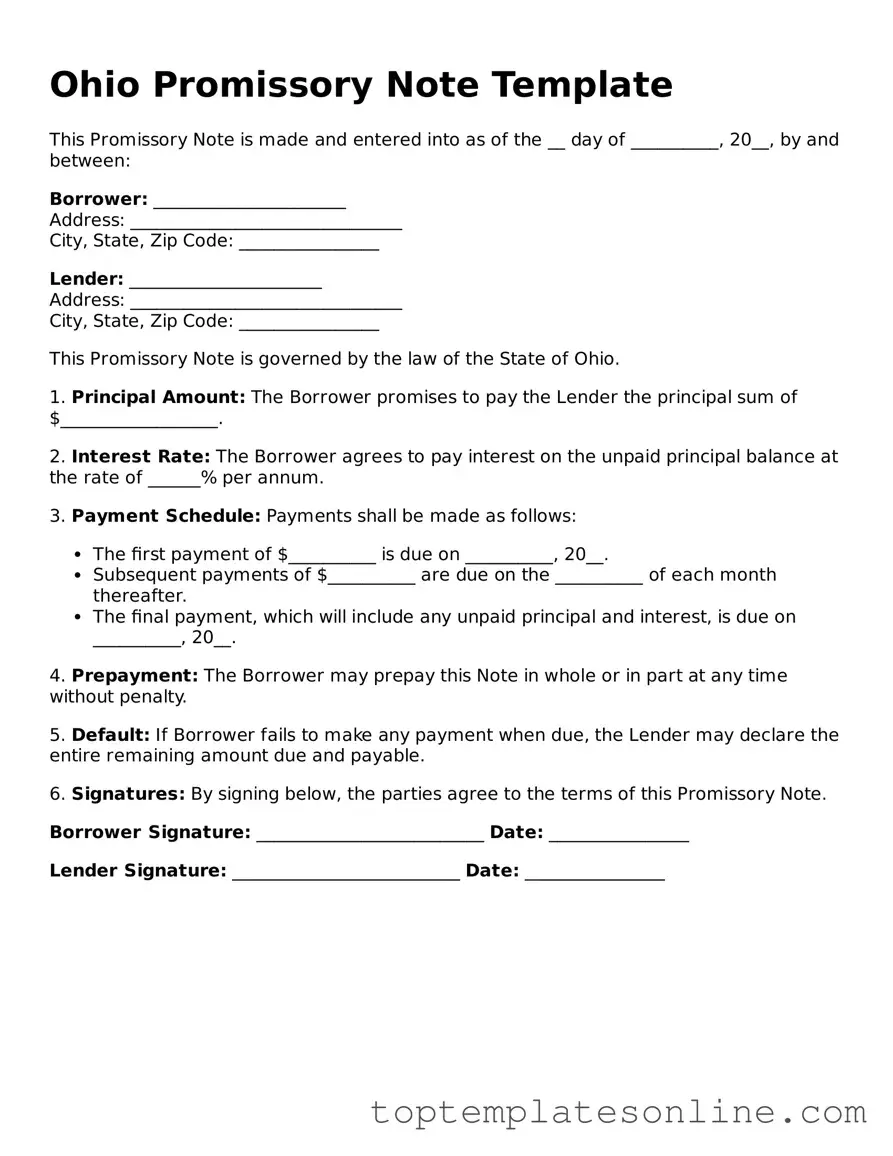Blank Promissory Note Template for Ohio State
A Promissory Note is a written promise to pay a specified amount of money to a designated person or entity at a future date or on demand. In Ohio, this legal document outlines the terms of the loan, including interest rates and payment schedules. Understanding the Ohio Promissory Note form is essential for both lenders and borrowers to ensure clear communication and protection of their rights.
Customize Promissory Note Here
